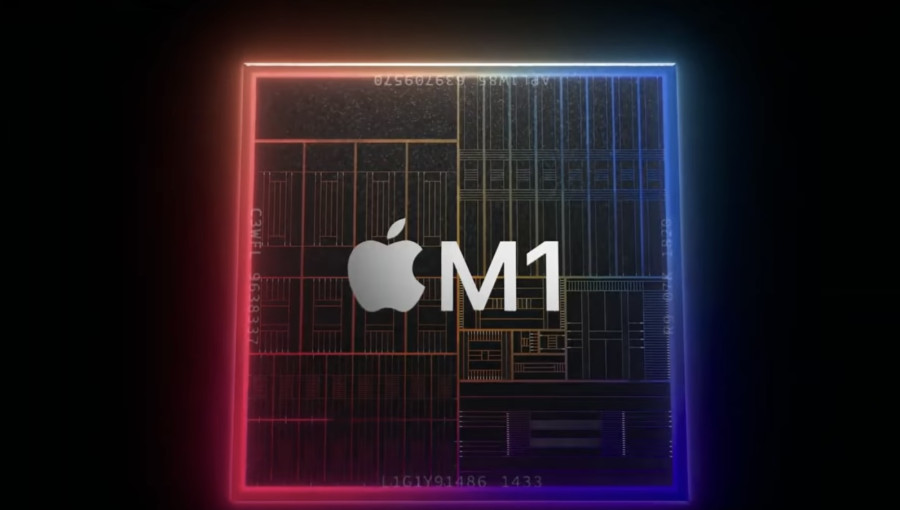Science & Technology
The M1 Macs: Should you buy one?
The new M1 Macs are definitely deserving of all the hype, they are some seriously impressive chips. But as these are first-generation chips, perhaps waiting would be wise.
Prajesh SJB Rana
The M1 chips have been all the hype these past few months for Apple. Reviewers all over the internet have hyped the computer’s insane performance and benchmarking scores. For a first-generation product, the M1 is remarkable. Even the MacBook Air with an M1 chip seems to overpower Apple’s own MacBook Pro line for computers with an Intel processor. While Intel chips still use the older more complicated x86 instruction set, the M1 is built on the ARM architecture that powers most smartphones and Apple’s own iPhone chips. Even though ARM-based CPUs are based on a simpler interaction set, they’ve grown into powerful chips that can easily handle laptop- and desktop-like production environments. Microsoft and Qualcomm both have dabbled with ARM-based CPUs before, although not to the same success as Apple, and we’ve also already seen large screen implementations of Android by companies like Huawei and Samsung.
Apple’s implementation of ARM on the M1 is simply extraordinary. They leave even the most powerful Intel processors in the dust in performance. It also helps that Apple has shrunk their transistor sizes to 5nm while Intel has for years struggled with miniaturising their transistors past the 14nm size. Even the newest 10th-generation Intel processors are based on 14nm transistor nodes while all of their competitors have already implemented smaller sized transistors into their CPU dies. In a controversial move, Apple has also moved all additional chips into the CPU die itself, and these include RAM chips and graphics chips and while these do wonders in reducing latency between these components, they also terminate all potential for
upgrades. With all the work that Apple has put into the implementation of the M1, it does the job excellently, but should you invest in an M1-based Mac right now? Well, that’s a difficult question to answer.
The new M1 Macs are definitely deserving of all the hype, they are some seriously impressive chips but regardless of all the hype, these are first-generation chips built on a completely new architecture. This shift isn’t new, however, and Microsoft has been pushing for an ARM-based future for a long time, all the way back to the release of the infamous RT based Windows 8. Even today, Microsoft sells ARM- based surface tablets with Windows 10 on ARM-based chips from Qualcomm. These devices haven’t been all that great since even a virtualised Windows 10 on the M1 seems to outperform the dedicated performance of Windows on Surface. In comparison to Microsoft's attempt at ARM-based chips, Apple has managed to release a much better chip, but the M1 is not all hardware and many of the problems, bugs and implementations of the new architecture can be seen on the recent Macs.
One of the major problems that arises from the implementation of a new processor architecture is incompatibility with applications written for Intel’s x86 architecture. Since the M1 is Apple’s first chip based on ARM, almost all of the applications for the Mac are written to work on Intel CPUs. Apple has implemented a software solution for this called Rosetta 2, a real-time translator that translates x86 code for ARM. While Rosetta 2 is also pretty impressive with little to no performance hit for Intel-based applications, it is still a translation which is bound to throw the occasional bugs and errors. All of Adobe’s Creative Cloud apps are X86 based, which means they will run on the M1s but through emulation meaning they will see a performance hit and throw up occasional errors, something you don’t want if you’re working in a professional environment. Earlier versions of Chrome were completely broken on the M1 and while Google was quick to release and update for support, many other third-party applications like VLC, Adobe Acrobat, and Docker work really poorly on Rosetta 2. With more complicated applications like the ones from Adobe and Microsoft, translation through Rosetta is also bound to throw errors in critical times.
There is no-doubt that through Apple’s clout and the popularity of Mac computers that these companies will, eventually, release versions of their apps that natively work on the M1s, but these need work and it’s going to be some time until these applications are released and the bugs worked out for them to be reliably used on the M1 Macs. But with an ARM-based CPU, the same architecture used on the iPhones, the M1 Mac support iPad and iPhone apps. While these apps will work natively on the M1, most of them seem to be in unusable states at the moment. Many of the apps built for the iPhone and the iPad are built around touchscreen interfaces which all of current Macs lack. Apple has released a band-aid solution of this by providing “Touch Alternatives”, a set of macro commands to emulate touch, most of them don’t translate well where apps expect you to use multiple fingers through multitouch or depend on smartphone specific hardware like accelerometers and gyros. While iPad apps work decently, iPhone apps are just a pain to use since they lack any window scalability and display inside this small window on most of the Mac’s high-resolution displays. iPhone and iPad apps are also opt-out for their compatibility with Macs which is why developers of high-quality apps like Google and Facebook have chosen to remove their apps from support of Macs, many have not and this is definitely going to lead to developers never focusing on improving Mac support since their apps are already available on the Macs.
Apart from application issues, there are major hardware issues with the M1 Macs. Since it’s an early product, many M1 Mac users have reported quick SSD wear, Bluetooth connectivity issues, Hardware encoding issues and a plethora of display issues. Some users have also reported a critical failure where M1 Macs boot into a blank screen. Many users online have been reporting various problems with the M1, as is to be expected from the first generation of chips.
The M1 is an engineering marvel and a monumental push for ARM based CPUs that could have been orchestrated only by Apple. Apple Silicon has managed to impress and with a chip so powerful, even low-performance model Macs like the MacBook Air can handle resource heavy apps with ease. But is it the right time to buy an M1 Mac? Maybe not right now, especially when it comes to reliability. If you’re going to buy the M1 Macs as an early adopter with full expectation of its unreliability, they maybe yes, but if you’re doing to be reliant on the machine for school or work, maybe hold off until the M1s gain a little more reliability and maturity. They are some really impressive and powerful chips that have changed the game, but so early into the game, Apple is bound to run into some growing pains.




 17.12°C Kathmandu
17.12°C Kathmandu








%20(1).jpg&w=300&height=200)

